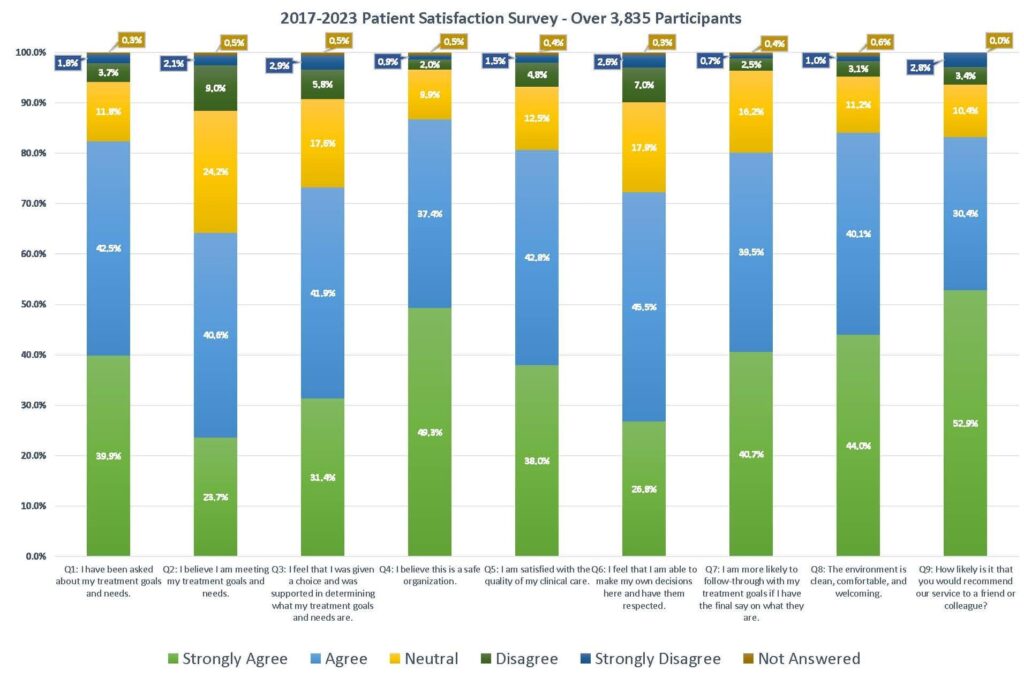At SunCloud Health we know that providing every patient with an opportunity to have a voice in their care builds an important and critical dialogue between us and our patients.
Building such a dialogue is key to establishing trust, which is a requirement when treating illnesses such as as trauma, substance use disorders, eating disorders and mood disorders.
Ensuring that our patients feel safe, that they feel included in their treatment goals and that they feel as though they are meeting their treatment goals is critical to long-term health outcomes.
One way we measure this information is through weekly satisfaction surveys which are provided to our patients while they are receiving treatment.
With this information our team is then able to drive targeted improvement strategies by monitoring these responses in real time and making clinical and operational changes when appropriate.
Feedback from our patients is powerful. Transparency with this feedback both within our organization and for the public is equally as powerful.
When we all know how we are doing, what we do well and what we may not do as well, we can all make informed and better decisions.
The chart below is a summary of the SCH Patient Satisfaction Survey. We post this on our website with updated results on a regular basis.
We know this data helps us, and we hope it helps you.
-David Newton
SunCloud Health, Director of Operations
Patient Satisfaction Survey Results
Disclaimer: This is aggregated data, represents averages and was collected from self-report measurements for patients who received care at SunCloud and who completed surveys. These outcomes should not be used to compare against similar measurements from other facilities. They are not risk adjusted. SunCloud cannot guarantee any outcomes. Every case is truly unique.
Explaining SunCloud’s Integrated Model Why is an integrated treatment model essential to successfully treating patients?
Dr. Kim Dennis, Co-Founder and Medical Director at SunCloud Health, discusses the vital role the integrated model (that she is pioneering at SunCloud Health) plays in the success of treating patients with co-occurring disorders and underlying trauma. How does SunCloud create an authentic culture of patient support?

















